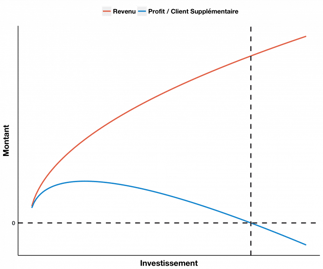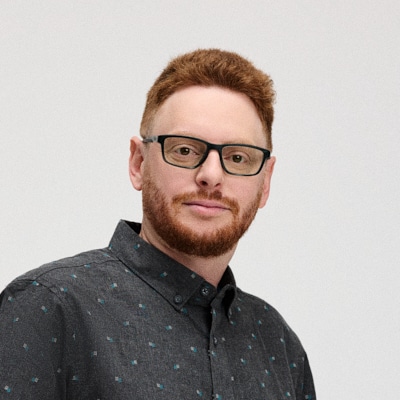Digital Media Practice Lead
Think Finance 2018 – Financial institutions in agile mode!
Digital Media Practice Lead
What challenges await financial institutions in digital marketing? A look back at presentations by Michele Romanow, Tony Chapman, Kristi Woolrych, Nicolas Darveau-Garneau and Desmond Andrews.
I had the opportunity to attend the Think Finance 2018 conference at the Google offices in Toronto last Wednesday. This conference presented by Google is intended for digital marketers who operate in the finance and insurance industry. The challenges faced by these professionals leave room for as many opportunities as risks. Let me present to you the words that have struck me the most as a digital media specialist and display expert .
MICHELE ROMANOW: THE CHALLENGE OF START-UPS AND CRYPTOCURRENCY
My first observations concern the last conference of the day, the one given by the entrepreneur and investor Michele Romanow , known for her participation in the show Dragon's Den and co-founder of Clearbanc , a company that supports and finances various emerging companies in the financial environment.
Large banks currently offer up to 300 products and operate in a slowly changing environment. The arrival of fintech start-ups could create major disruptions because they are better able to seize opportunities quickly and because the majority of them focus on one or a few products at a time. If there is a start-up that takes market share from traditional banks for each of their 300 products, they will have no choice but to adapt or review their offer.
Just think of a player like Wealth Simple , which has achieved phenomenal growth in the investment management space thanks to its unique offer. Agile companies are able to respond quickly to ever-changing consumer needs. But the challenge for banks does not end with the competition created by fintech, these institutions must also adapt to cryptocurrency, which is seen as an increasingly real threat to traditional money.

CHAPMAN AND WOOLRYCH: A PROBLEM OF DIFFERENTIATION
For their part, Tony Chapman and Kristi Woolrych addressed issues related to the brands of traditional banks. According to a study, 76% of individuals consider that there is little or no difference between the bank they use and the competition . This means that they essentially offer the same products with a service that rarely exceeds expectations.
To counter this trend, Chapman recommends that banks focus on two things: mobile usage and trust . Banks' mobile applications are still not quite able to meet the growing needs of users. They must multiply their efforts to stand out from the competition. These institutions must also create emotional ties with their clients through a relationship of trust. Banks support their customers through various life projects, and it is by creating solutions adapted to the realities of their customers that they will be able to enrich this confidence.
In a brand performance keynote, Woolrych explained how Suncorp Group , the company where she works, used data and science to test different creative iterations in video format, all with the aim of maximizing the impact of an advertisement on brand awareness . They test their ads first in digital, then put forward the best performing message on television. The thing? Implement an always-on system and constantly adjust based on learnings from previous iterations.
This approach has proven itself, generating results exceeding expectations for the group's flagship brand and very promising for all the other brands. Moreover, Adviso also tested (successfully) a similar approach for Lassonde , where more than 75 variations were created and then analyzed to quickly and effectively change the perception of the brand among qualified audiences.
DARVEAU-GARNEAU AND ANDREWS: TOWARDS OPEN BUDGET MANAGEMENT
The next big step in optimizing performance budgets is identifying user lifetime value, and its influence on media decisions. This topic was discussed by speakers Nicolas Darveau-Garneau and Desmond Andrews . They explained that once the value of potential customers is known, we must assign a CPA cap to our campaigns and maximize customer acquisition. However, to set up such a system, several elements are needed:
- Be 100% Certain of User Lifetime Value : Andrews explained that he worked with the accounting and finance teams to come up with a sensible value. If we estimate an amount that is too high, we will greatly limit our investment, but an amount that is too low will mean that our investments will not be profitable.
- Segment users : not all customers have the same value and you have to be able to identify these customers before even targeting them. By combining primary and supplier data, it is possible to identify the users who have the best potential for profitability.
- Understand attribution and develop your own model : let's go beyond last-click attribution on search engines. The impact of a Youtube or social media campaign can have a measurable impact on the results produced via other channels. You have to understand this impact and manage to balance the different channels.
- Tie business data to programmatic purchases : Not all products can return profitability information in real time. Some require human analysis of the submission to validate its potential value. A tracking system must be in place to link this information to the media buying platform.
- Anything but the status quo : it's completely normal not to have the perfect solution on day 1, but the important thing is to move forward. It sometimes involves working with estimates and some uncertainties, but it's much better than staying at square one.
Once these elements are in place, it is easy to understand that you can work with an almost unlimited budget, as long as the investment pays off more than it costs .

We can see in the graph below that the profit per additional customer is generally decreasing in an acquisition context. The key is therefore to identify from which investment the profit curve becomes negative.
According to Darveau-Garneau, there are generally one or two advertisers per country who stand out, and who are very profitable. It is a question of being able to properly measure your investment in order to stand out from the crowd.
NEXT STEPS: ROOM FOR TRANSFORMATION
A change is needed for banks and their marketing departments in the coming years. We implement agile frameworks to maximize the number of tests and quickly identify the most efficient iteration for our product. We rely on science and data, we are constantly innovating. This context not only invites you to dive into the management of change and innovation, but also to immerse yourself in a profound transformation of the company .
The various business partners gravitating around this industry have an important role to play in this transformation. We often find ourselves at the crossroads of multiple strategic issues that affect both marketing operations and major business orientations. Some financial firms are considering internalizing operations functions traditionally entrusted to agencies and others are outsourcing execution to a greater extent, keeping only strategic thinking in-house.
For the past few years, we have had the chance to be at the forefront of these major reflections, by being both witnesses and agents of change. Our experience allows us to act as an advisor to senior management, as well as to support marketing teams to take action and implement the desired changes.
An industry that is changing is an industry that offers its partners the opportunity to innovate. Faced with these changes, we must not go against the current for fear of losing our acquired rights or roles, but rather be a facilitator and even sometimes an initiator.
Do you have questions about the topics discussed at this Think Finance conference? Let me know in the comments section!


.jpg)




